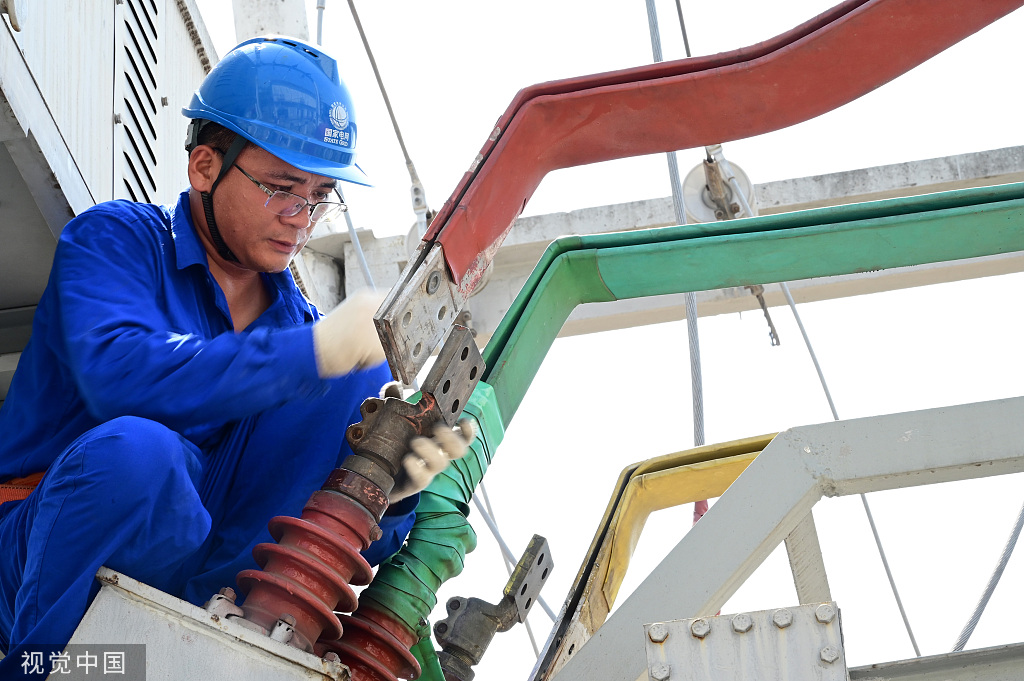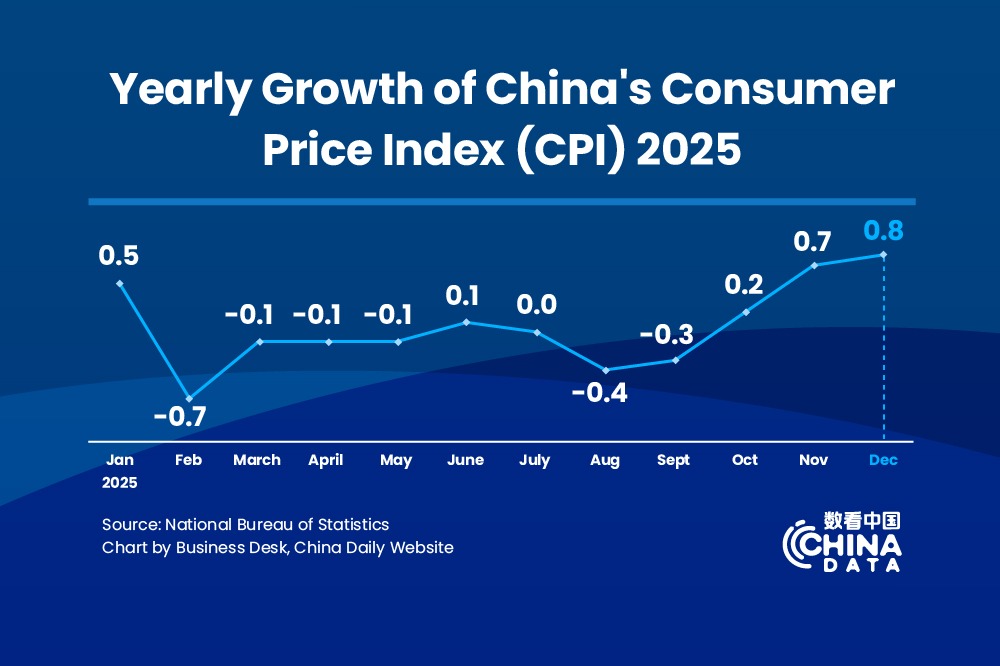Energy security, power supply, green goals are all linked


Recently, scorching temperatures in China have spurred surging electricity demand. Power grids in certain areas have reached their peak loads. At the same time, droughts have occurred frequently in areas from the Sichuan Basin to the middle and lower reaches of the Yangtze River. Sichuan province, whose electricity generation is largely reliant on hydropower, has seen a decline in rainfall, which intensified the problem of insufficient power supply.
Such problems have drawn the attention of the government to step up efforts to ensure energy security. At present, relevant departments have rolled out measures to ramp up supplies while managing demand. At the same time, governments have beefed up efforts coordinating the dispatch of raw materials like coal. The moves have highlighted the importance of guaranteeing energy security.
China now faces two major challenges in achieving its goal of peaking carbon emissions by 2030 and achieving carbon neutrality by 2060 as the country transitions to a low-carbon energy structure and stabilizes supply to ensure energy security. It is therefore necessary to recognize the major problems at different stages and solve them accordingly.
From the short- and mid-term point of view, major challenges China faces to ensure energy security are insufficient power supply in certain regions due to extreme weather and high dependence on oil imports.
The possibility of extreme weather is likely to increase in the future, and climate conditions could be a major challenge to ensuring energy supply. In order to cope with the problem of energy shortages during extreme weather, it is necessary to promote the development of smart grids, provincial grid interconnectivity and diversified power structures.
First of all, using electricity in a more orderly manner can effectively and quickly deal with the problem of a sudden increase in power loads. The process can be better managed, such as adjusting the proportion of residential power use and industrial use via smart grids. During extreme weather, there will be sharp fluctuations in residential use of electricity, but such periods typically don't last long. In such cases, asking industrial enterprises to use power in an orderly manner could help ease the pressure of imbalances in power supply and demand, and ensure residential power use. Therefore, planning ahead and investing in grid construction is increasingly important. It is necessary to consider extreme weather's possible influence on power grids, and help the grid be more resilient and smarter.
Second, the power grid network should be more systematic and interconnected, and it is necessary to avoid independent power grids. Through the interconnection of the power grid network, different regions can dispatch and transmit power to reduce losses from power halts or insufficient supply in certain areas.
Last but not least, diversifying power sources and underlining the significance of coal power are important to help stabilize power supply during extreme weather.
In addition, China has a relatively high dependence on oil imports, and events such as the Russia-Ukraine conflict are likely to pose certain challenges to China's energy supply. Although China's oil supply has been stable for an extended period, the impact of geopolitical conflicts and trade risks on oil supply should not be underestimated.
The Russia-Ukraine conflict has a huge impact on Europe's energy supply, causing shortages in oil and gas, and it is difficult to find replacement sources over the short term. At present, the high energy prices have seriously affected the social and economic development of Europe.
In China, oil and gas account for less than 30 percent of current energy consumption, and the impact of oil and gas supply shortages is relatively controllable. However, the issue of secured oil supplies still cannot be ignored.
China's low-carbon transition-led by its commitment to peak carbon emissions by 2030 and reach carbon neutrality by 2060-also provides a concrete solution to reduce China's oil dependency. During the transition process, electric vehicles play an important role in reducing carbon dioxide emissions and can reduce oil dependency by accelerating the replacement of gasoline-powered vehicles with EVs.
Therefore, China's energy security, over the short term, can be mainly achieved through the large-scale development of EVs to reduce reliance on oil imports. That is to say, increase the use of clean energies to generate electricity and encourage more consumption of renewables and natural gas to reduce reliance on oil imports.
From the mid- and long-term points of view, China's energy security needs to be realized by ensuring a safe and stable power supply. Special attention should be paid to the safe operation of the power grid with a higher proportion of wind and solar power generation.
To achieve China's green goals, wind and solar will eventually need to account for about 65 percent to 70 percent of the total energy mix. How to transform intermittent wind power and photovoltaics into stable power sources will be a major issue to ensure energy security.
China's energy structure will eventually shift to a low-carbon energy structure with new energy as the main source. Under such circumstances, in order to ensure energy security, attention should be paid to the stable operation of power grids, which is challenged by the unstable supply of wind and solar sources.
Currently, coal-fired power still accounts for a large proportion of China's energy structure, and wind and solar power account for less than 10 percent. As a result, when there are large fluctuations in wind and solar power generation, grid operation can be stabilized by coal-fired power. The wind and solar power is still relatively small, and is not playing a major role in China's energy security. Therefore, it is not necessary to focus too much on smart grids and power storage for now.
However, by the time when the portion of wind and solar power in China's energy mix gradually increases to over 65 percent, that of the coal power generation will drop significantly. Coal-fired power will only play a role to ensure stable power supply during certain situations. To better promote the development of new energies by then, it is necessary to develop large-scale power storage and enact smart grid regulations.
In order to better ensure power supply after a large proportion of wind and solar power facilities are connected to grids, stable operation of power grids needs to be taken into consideration.
Specifically, in an energy structure with wind and solar power making up a majority, costs on the generation side may gradually decline with the expansion of installed capacity and technological innovations. Meanwhile, the transmission and distribution sides may face increasingly high costs to maintain a stable supply of electricity. In the future, the overall costs of the power systems may be more focused on stabilizing the power supply, and these costs will increase with the rapid growth of the new energy power systems and energy storage systems. The current power system has difficulty absorbing transition costs internally. This requires users to gradually participate in sharing the cost of stabilizing power supplies.
Amid China's drive to reach its green commitments, ensuring energy security will become an important issue for social and economic development. Over the short- to mid-term, in response to insufficient power supply in certain regions caused by extreme weather, and due to the high reliance on oil imports, more efforts should be made on power grid construction, diversifying power sources and developing EVs.
Over the mid- to long-term, to ensure safe power supply after a large proportion of wind and solar power facilities are connected to the grid, efforts should be made on both the generation and consumption sides. On the power generation side, it is necessary to scale up installations of power storage systems to ensure stable energy supply. On the consumption side, more efforts are needed to gradually improve electricity's pricing mechanism to allow users to participate more in ensuring stable power supply.
In short, China needs to prudently find a balance between ensuring stable energy supply and achieving its green goals.
The writer is head of the China Institute for Studies in Energy Policy at Xiamen University.
The views don't necessarily reflect those of China Daily.




































